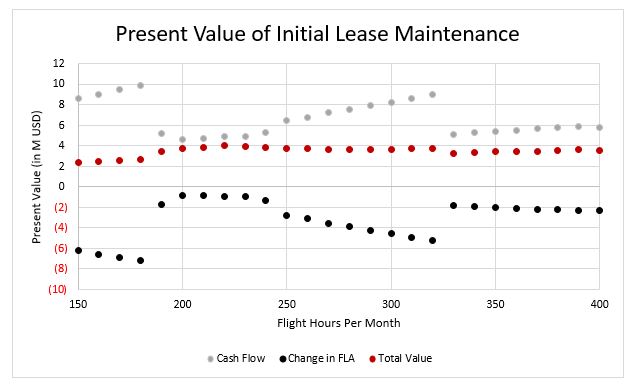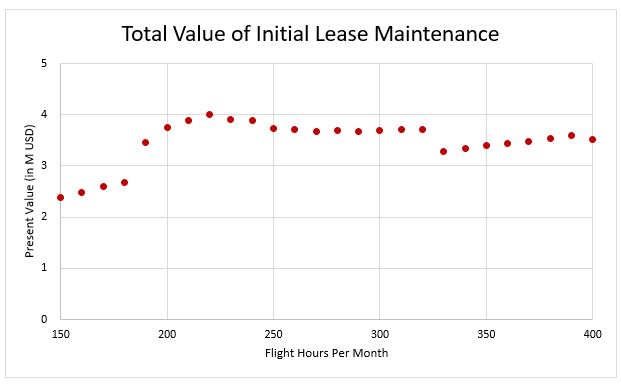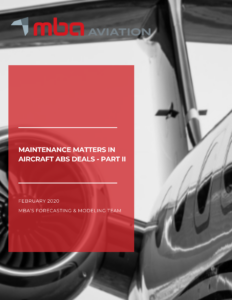
Maintenance Matters – Part II
Utilization is a major driver of aircraft maintenance. The majority of an aircraft’s value is in its engines, and the engines will deteriorate based on the number of flight hours and flight cycles they fly. Correspondingly, the majority of the maintenance compensation for an aircraft is driven by flight hours and flight cycles. However, if the utilization of an aircraft increases, the value of the cash flow associated with that aircraft may not increase in a linear fashion, or at all.
In order to demonstrate the effects of varying utilization on the maintenance cash flow of an aircraft, we will posit a generic scenario common to an aviation asset backed securitization (ABS).
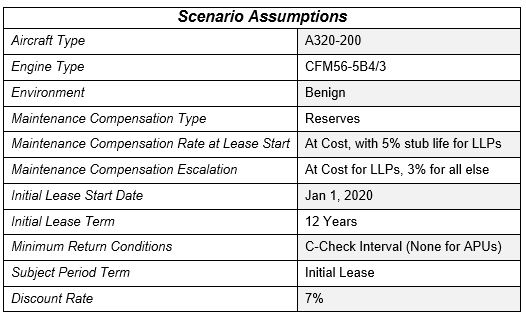
The monthly cash flow was varied between 400 flight hours and 150 flight hours in increments of 10 and assigned a number of flight cycles that would correspond to that number of flight cycles using a linear formula based on industry information. A narrowbody operating 400 flight hours per month would be expected to be flying 2.54 hour flight lengths, which a narrowbody operating 150 hours per month would be expected to fly 1.73 hour flight lengths.
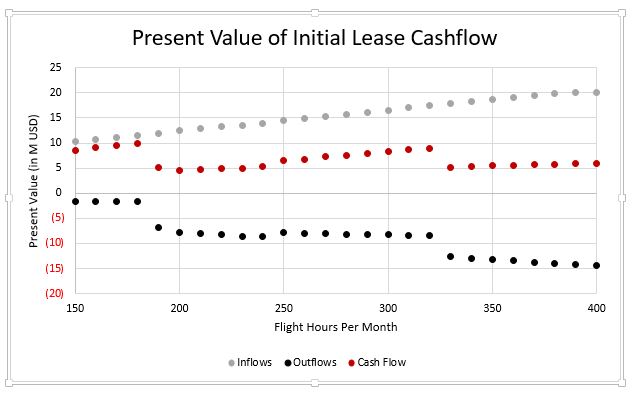
Maintenance inflow alone does not vary linearly with utilization. While in general, the present value of inflows over the period increases as utilization increases, the lack of reserve collection during maintenance downtime influences the totals.
The increase in maintenance outflows as utilization increases is significantly less constant. Some outflow-causing maintenance events, such as landing gear overhauls and airframe heavy checks, are primarily calendar-driven and do not shift as utilization is varied within this range. However, engine overhauls and engine LLP replacements, which are the cause of the vast majority of outflows over the life of the aircraft, are utilization driven. These events can occur due to engine condition (driven by hours and cycles), LLP life limits (driven by cycles), or minimum return conditions for engine condition or LLP cycles remaining until life limit (driven by lease negotiations).
The value of the aircraft’s maintenance condition at the end of the period is also relevant to the value of the aircraft over this period. Therefore, for as complete a picture as possible, and to be able to answer the question of if increased utilization increases value for the lessor, we will take these into consideration. The value of this aircraft’s maintenance over the Subject Period is the sum of the present value of the cash flow during the subject period and the present value of the maintenance adjustment at the end of the subject period.
